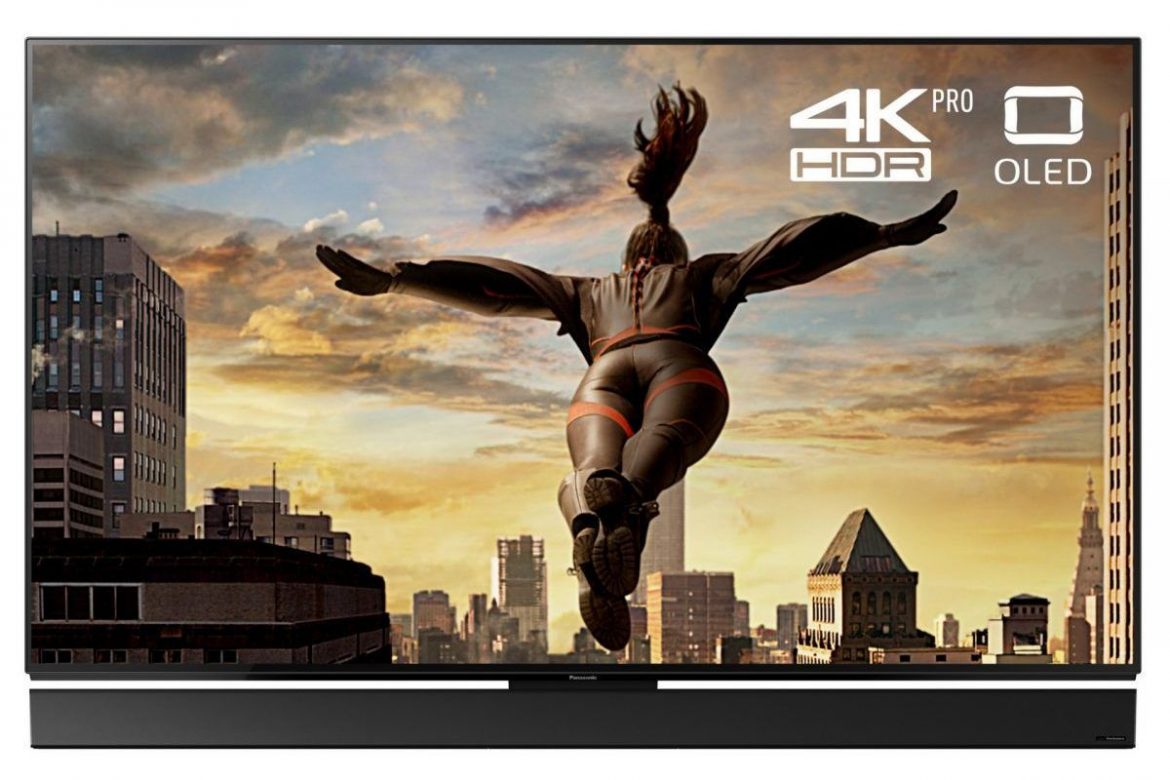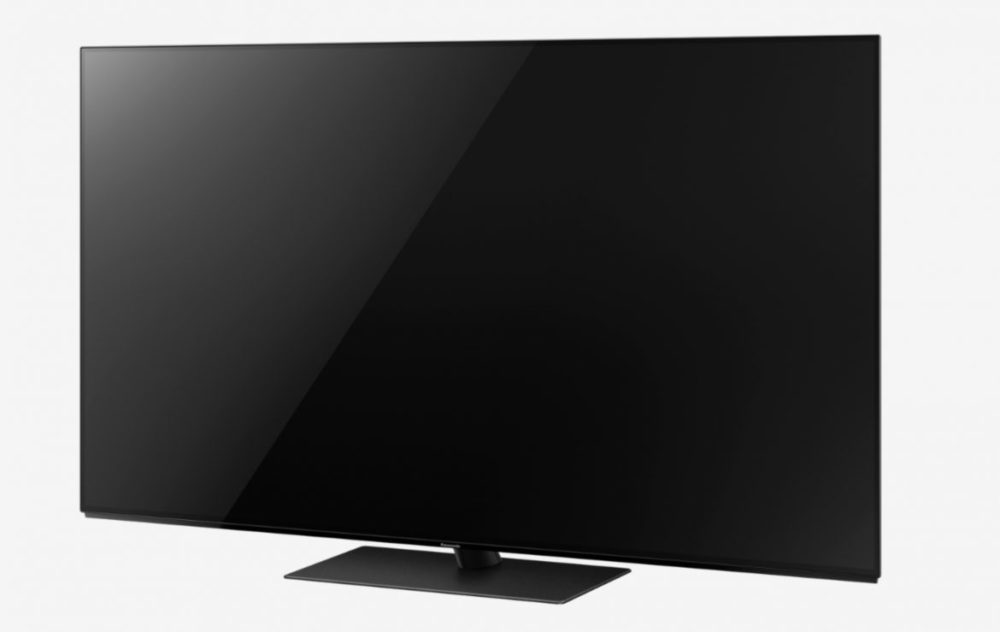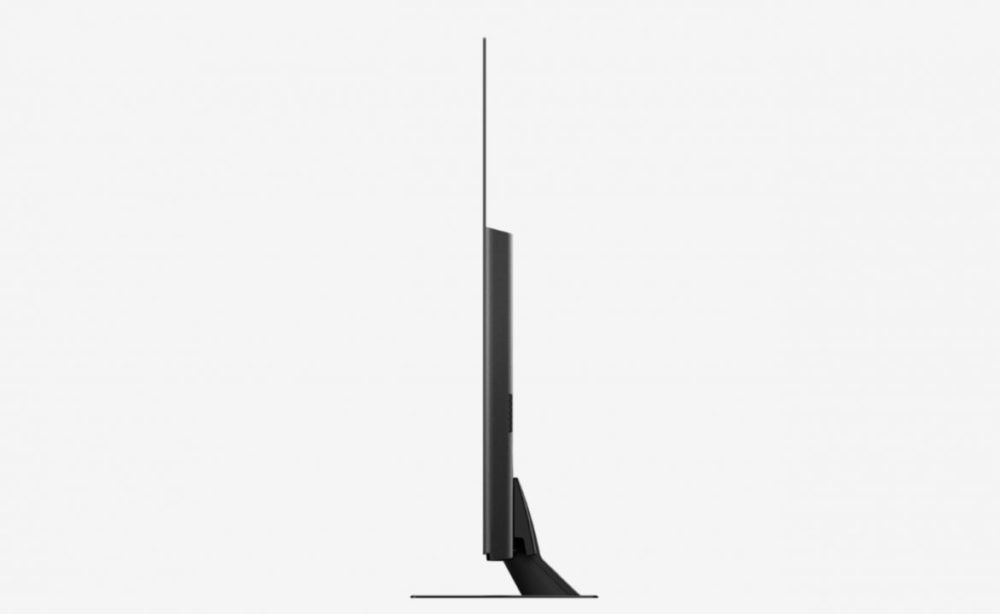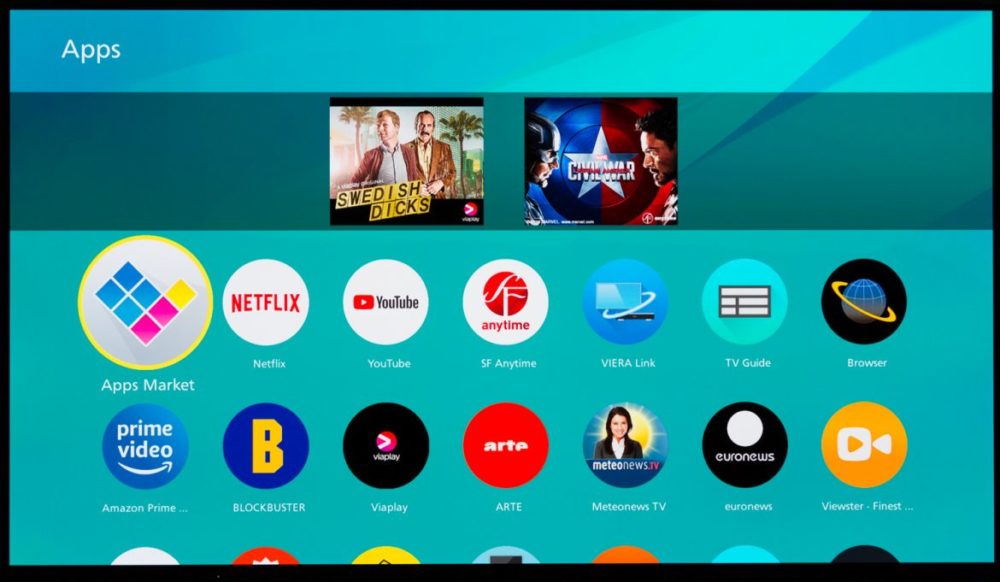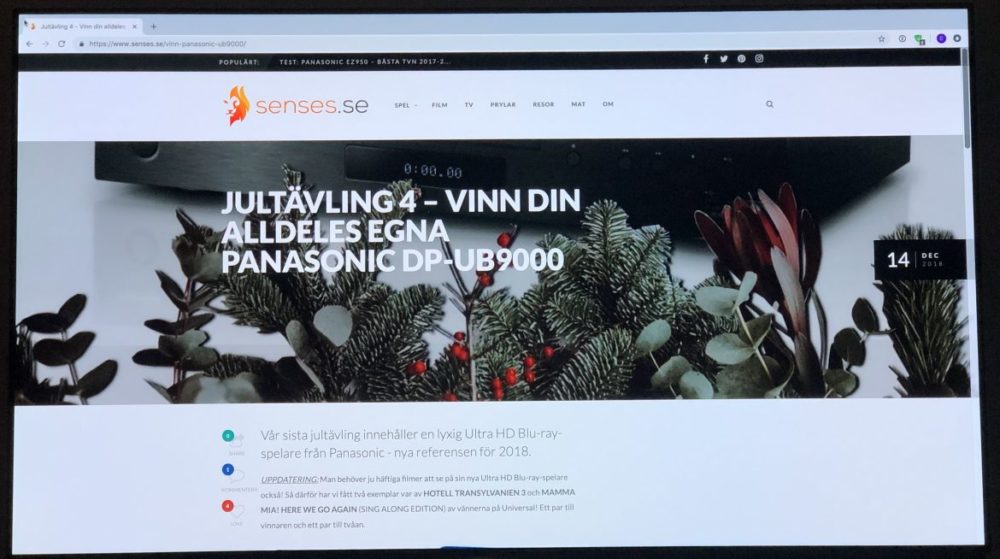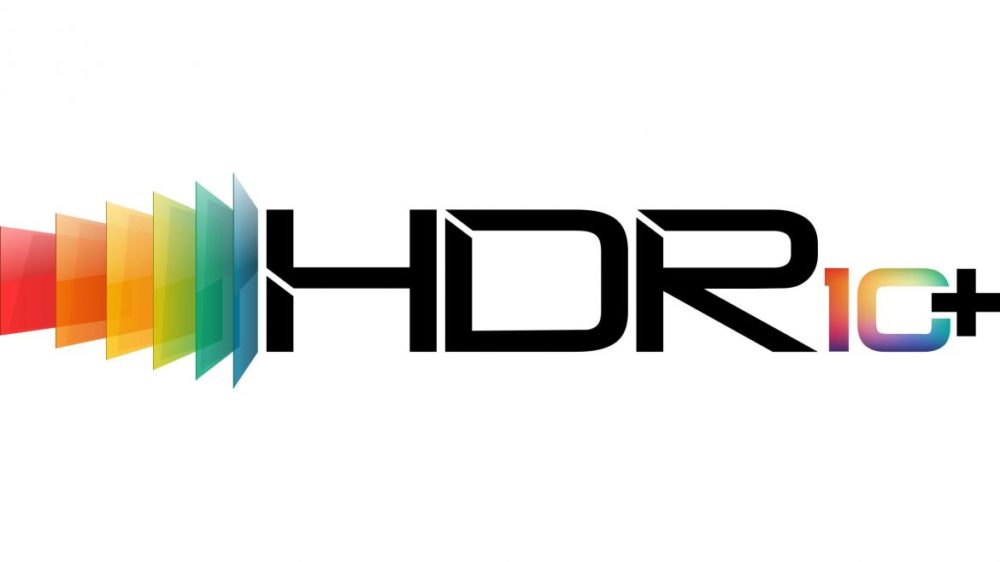TL;DR
Panasonic's FZ800 OLED TV builds on its predecessor's excellence, offering refined picture quality with improved color and contrast, especially in darker scenes. It boasts increased brightness, wider color coverage for HDR content, and adds HDR10+ support, though it still lacks Dolby Vision. Despite a slightly redesigned, less premium remote and inconveniently placed ports, the FZ800 offers excellent value with a lower price point than last year's model and impressive gaming performance. It's a superb choice for cinephiles and gamers seeking top-tier visuals. Discover if these enhancements make it the perfect upgrade for you!
Update: Read the review of the follow-up model, Panasonic TX-65GZ2000 (2019/2020).
The arrival of the Panasonic TX-65FZ800E, or FZ800, marks almost exactly one year since Panasonic impressed our review team with its OLED TV model EZ950 – a strong contender for the best TV of 2017 in the high-end segment. This year, Panasonic introduces the next generation OLED, logically prefixed with FZ, but somewhat illogically numbered 800 instead of 950. The 950 designation is reserved for the same TV model but with an integrated soundbar (akin to last year’s EZ1000). How much can one improve upon a TV that already delivered near-perfect picture quality? And does this model address the features we found lacking in 2017? We aim to answer these questions and more.
Panasonic FZ800 – Design, Technology, and Build
(As the FZ800 represents an upgrade to last year’s reference TV, the EZ950, we recommend reviewing that review first if you are unfamiliar with the model or the fundamental differences between LCD and OLED technology.)
The FZ800’s design closely mirrors the EZ950. The exterior is almost identical. Without consulting the manual for precise measurements, distinguishing between the models would be challenging (the FZ800 is marginally taller and less wide, while maintaining the same diagonal screen size). The FZ800 also weighs slightly more than its predecessor (28 kg vs. 23 kg), though the difference is not readily apparent when lifting. It remains remarkable how 65-inch TVs can be lighter than 32-inch CRT TVs from two decades ago.
The paper-thin frame (in the upper third) is retained, as is the thicker bottom section (housing the internal components). Regrettably, the inconvenient placement of HDMI 3 and 4 outputs, along with the optical output, two USB ports, and the component connection, persists. These ports remain inaccessible when the TV is wall-mounted, a desirable configuration given the TV’s sleek design. This design choice feels like an oversight on Panasonic’s part. While these connections may not be essential for all users, their usability should be preserved.
As with last year’s model, a standard VESA 400×400 wall mount facilitates wall installation. The HDMI 1 and 2 connections on the left side, which include the ARC channel and offer full bandwidth (4K, 60fps, and 4:4:4 chroma), remain readily accessible. In practice, a single HDMI connection with full bandwidth, paired with an amplifier equipped with sufficient HDMI ports, may suffice. The included stand is slightly smaller, sturdier, and more refined than its predecessor, accommodating relatively compact surfaces – a benefit for users who prefer not to wall-mount the TV or purchase oversized furniture.
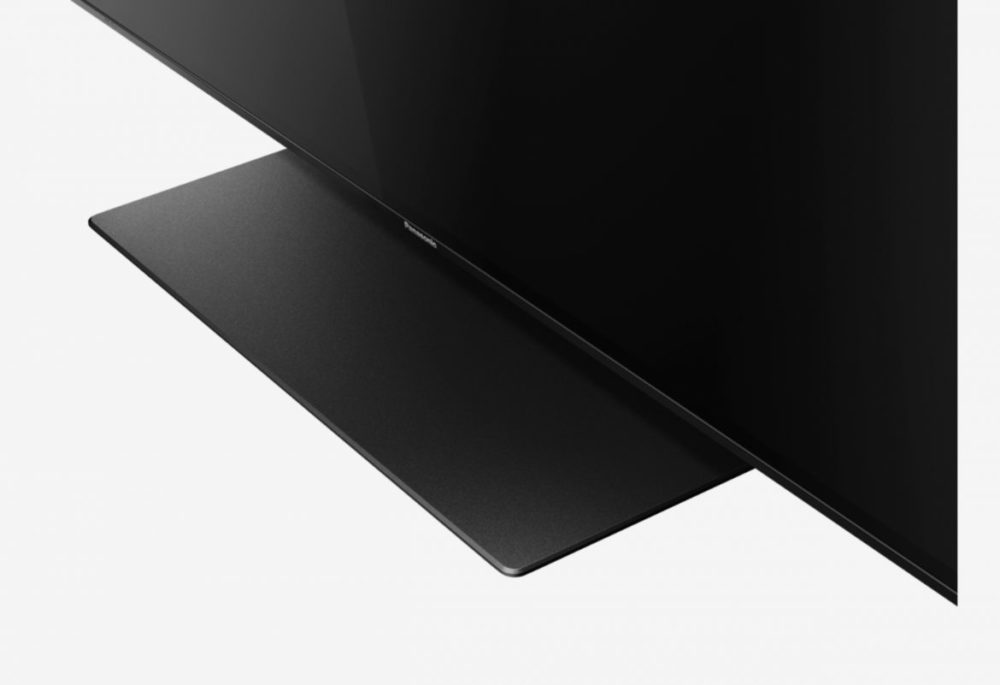
The redesigned TV stand offers enhanced stability and flexibility, although we believe the TV’s aesthetics are best realized when wall-mounted.
Panasonic has notably reduced the price point this year; the FZ800, an improved model, is priced lower than the EZ950 at its release (approximately 20% less, from roughly SEK 45,000 last year to SEK 35,000 for the 65-inch model tested here). The 55-inch version of the Panasonic FZ800 is among the most competitively priced OLED offerings in the premium tier, undercutting comparable models from Sony (AF9) and LG (E8) (Samsung’s QLED technology is more akin to LED than OLED). The 55-inch variant of the FZ800 exhibits identical image characteristics to the 65-inch model. In addition to the price reduction, the TV has also achieved greater energy efficiency, improving from a B to an A rating, which benefits both energy consumption and environmental impact. While Panasonic has economized by removing the touch remote with voice control (which saw limited use), the primary remote has also been downgraded. Last year’s brushed metal design has been replaced with a generic grey, plastic remote featuring rubber buttons and lacking backlighting. Although fully functional, it feels somewhat incongruous with the overall sophistication of the TV (the FZ950 retains last year’s premium remote, as does the FZ800 model sold in Germany, presumably due to market size). On a positive note, the menus and system responsiveness have improved, and newly added buttons, including a dedicated button for picture mode selection, are welcome additions.
Mirroring Panasonic’s flagship UHD player, the Panasonic DP-UB9000, the Studio Color HCX2 (second generation) image processor is integrated into this year’s TV models. This processor is renowned for its color accuracy, and Panasonic’s OLED screens are used by Hollywood studios such as Deluxe for professional color grading of films and TV series. This ensures that the image displayed on your Panasonic TV accurately reflects the filmmakers’ creative intent. HCX stands for Hollywood Experience, and in this instance, it is not merely marketing hyperbole. In addition to the advanced circuitry, the FZ800 meets THX’s stringent standards for color, contrast, and luminance, and it offers two THX preset modes: one for dark rooms and one for bright rooms, both closely adhering to reference measurement values.
Smart TV functionality in 2018 is not a primary factor in purchasing decisions, given the affordability and technical superiority of media players such as Chromecast and Apple TV 4K. Panasonic continues to utilize the My Home Screen operating system (version 3.0 this year, with minimal discernible changes from the previous iteration), based on the discontinued Firefox tvOS. The user experience remains largely unchanged, although there is support for a range of pre-installed apps, including SVT Play, Viaplay, SF Anytime, Netflix, YouTube, and Amazon Prime, with appropriate HDR support where available. The ability to install custom applications, particularly locally relevant services such as HBO Nordic, CMORE, and TV4, would be a welcome addition. However, we rarely utilize integrated apps beyond dedicated media players, whether on TVs, UHD players, or game consoles. While this aspect may appear somewhat neglected, it is becoming increasingly redundant, particularly given the ease of using Miracast or other external solutions to stream or mirror content to the TV. While other manufacturers offer superior smart TV platforms, this often involves licensing costs.
The Panasonic FZ800 supports Auto Calibration in the popular professional calibration software CalMAN, enabling experienced users to perform calibration at home with specialized equipment and software, or via professional services at electronics retailers. However, our American colleagues have reported that the deviation from the preset and measured THX values is minimal, suggesting that professional calibration may not be necessary for this model.
Panasonic FZ800 – Key Enhancements
The picture quality, the most critical attribute of a TV, remains Panasonic’s strength. Building upon the near-perfection of last year’s model, the FZ800 features further improvements in three areas, thanks to the 2018 OLED panel from LG Displays and Panasonic’s proprietary image processing chip and algorithms:
1) The 3D LUT (Look Up Table) has been refined with additional layers and fine adjustments, enhancing color and contrast in dark scenes. When transitioning from complete black to near-black, the FZ800 achieves a color and nuance accuracy approaching 100% of the DCI (digital cinema color) standard. The TV dynamically processes new information for each pixel every 10 milliseconds, improving contrast and detail, particularly in HDR content.
2) Like the EZ950, the FZ800 supports the HDR standards HDR10 (the most prevalent HDR format, which is static) and HLG (primarily used for sports broadcasts on BBC and in Japan), and introduces support for the challenger format HDR10+. On paper, HDR10+ could surpass the competitor Dolby Vision, as it is a royalty-free, dynamic format that transmits metadata on a frame-by-frame basis and can be controlled by manufacturers, eliminating the need for Dolby’s proprietary chips and licenses.
However, HDR10+ content is currently scarce. At the time of writing, no HDR10+ content is available. The first physical film releases supporting the format are expected later in December, but were unavailable for this review. Amazon Prime claims to offer HDR10+ content, but verification is difficult, as no indicator is displayed when an HDR10+ signal is detected, differentiating it from standard HDR10. Amazon’s content descriptions simply state “HDR,” providing little clarification. Unconfirmed sources suggest that the following Amazon productions support HDR10+: The Tick, Philip K. Dick’s Electric Dreams, The Grand Tour, Mozart in the Jungle, as well as Amazon’s feature films Manchester by the Sea and Last Flag Flying. While these productions exhibit exceptional picture quality, confirmation of genuine HDR10+ support remains elusive.
Amazon’s The Tick looks impressive on the FZ800, but is it truly HDR10+? Only Amazon can confirm.HDR10+ presents an intriguing alternative with the potential to become a superior format, but its current impact remains uncertain. The format faces a considerable challenge; while HDR10+ awaits its initial confirmed physical releases and verified streaming content, Dolby Vision has established itself with hundreds of UHD 4K releases and support from Netflix and Apple’s 4K film service (iTunes), resulting in thousands of Dolby Vision productions. While certain Netflix productions, such as Stranger Things, may exhibit superior quality in HDR10 compared to Dolby Vision, Dolby Vision enjoys significant and readily available support.
As previously noted, the Panasonic FZ800 continues to lack support for Dolby Vision. The year 2019 will be critical for HDR10+ to demonstrate its capabilities. Bad Times at the El Royale has been confirmed for release in HDR10+, along with two nature films and a documentary. The absence of Dolby Vision support is a notable omission, particularly as Panasonic’s UB9000 4K player includes support for the format. However, no TV currently supports both Dolby Vision and HDR10+ concurrently. Given Panasonic’s partnership with Philips and Samsung (the world’s largest TV manufacturer), and the support of Warner and Fox (Disney?) for the challenger format, HDR10+ has the potential to catch up to and perhaps surpass Dolby Vision over time (as it is an open and license-free standard). Currently, Dolby Vision offers broader support. If HDR10+ fails to gain traction in 2019, Panasonic must reconsider its strategy for future models. (Additional Considerations: Dolby Vision is designed to accommodate 12-bit color depth, while HDR10+ is limited to 10 bits, theoretically reducing the color palette by several million shades. However, this is a future consideration, as display panels capable of rendering 12-bit color depth are not yet available. The HDR10+ consortium may release an updated iteration of the format, perhaps HDR12+.)
3) Panasonic’s built-in TV speakers have been refined and now deliver 40W of power. While they do not replace a dedicated soundbar or home cinema system, they offer surprisingly robust, clear, and immersive virtual surround sound.
Panasonic FZ800 – Picture Quality Assessment
What is the picture quality in practical use? In short: exceptional. While the improvement over the EZ950 (which already delivered outstanding picture quality) is not dramatic, the FZ800 offers more balanced and dynamic color handling, along with improved contrast. The FZ800 largely eliminates the imperfections in shadows and near-black tones observed in its predecessor. Brightness has also been increased; the panel reaches approximately 1000 nits on a standard 3% HDR window, bringing it closer to the superior brightness of LCD technology (one of the few advantages LCD currently holds over OLED). The wide viewing angle ensures consistent picture quality for viewers seated at various positions.
We evaluated the FZ800 using a selection of our preferred UHD 4K Blu-ray discs, played on our reference Ultra-HD player, the Panasonic DP-UB9000:
Deadpool 2, in addition to being a humorous action film, features a compelling 4K picture (upscaled from 2K, as Deadpool 2 was filmed in 2K) with HDR10 mastering, demonstrating that even the static format can deliver impressive visuals. The Super-Duper Extended Cut is recommended for its enhanced content and slightly sharper details and colors compared to the theatrical version. Textures on clothing, faces, and hairlines appear exceptionally sharp on the FZ800. While the original Deadpool was a native 4K master, Deadpool 2’s larger budget and more refined mastering may result in a visually superior experience.
Justice League – While Zach Snyder is not a favorite director of our review team, his works offer a unique visual experience. His decision to film on 35mm film instead of digitally is both surprising and fascinating, as 35mm film scans exceptionally well to digital 4K. At the same time, the overwhelming use of digital effects in his films would seem to be more easily managed with a digital format. Justice League utilizes the entire screen with its 1.78:1 aspect ratio (reminiscent of 16:9 DVDs) showcasing the full capabilities of the FZ800’s image processor. The film blends spectacular comic book colors with Snyder’s signature dark and rainy aesthetic. The result is visually stunning in full-screen 4K.
Mission Impossible: Fallout was recently released on UHD and features an excellent transfer. In one of the film’s most memorable early scenes, Ethan Hunt (Tom Cruise) and CIA agent Walker (Henry Cavill) parachute from an aircraft. The scene showcases exceptional black levels, combined with intricate detail and striking lighting effects. The red warning light illuminating the cargo hold and the razor-sharp facial details visible through the illuminated masks are particularly impressive. The night scene over Paris emphasizes the city’s numerous light sources, thanks to skillful use of HDR.
Check out this scene from MI: Fallout at high volume using the UB9000.It – The remake of It features an immersive soundtrack, and the UB9000 heightened our experience with both the Dolby Atmos and DTS-Master Audio soundtracks. The daytime scenes appear sublime, while the darker indoor and nighttime sequences gained additional clarity through the UB9000 compared to our previous reference player, the Panasonic UB700.
In Ready Player One, Steven Spielberg demonstrated his continued relevance as a director. The visual masterpiece (based on Ernest Cline’s novel) was a highlight of the theatrical releases of last year and is ideally suited for a robust home cinema setup. While the film is heavily reliant on visual effects, substantial portions were filmed on celluloid (classic 35mm) while others were captured digitally. The differences are readily apparent, and the digital sections look good even in Full HD. However, the classically filmed sequences showcase the advantages of the extra resolution of Ultra HD, along with the enhanced light and colors delivered by Wide Color Gamut (genuine HDR) on Panasonic’s FZ800. The black levels provide a depth that we have not previously encountered. The opening scene of the film, featuring the Burnout-inspired car race, is a perfect demo sequence for showcasing a new 4K TV.
Planet Earth II is a well-established reference disc, and Panasonic often included it with their UHD players in 2017. The BBC production, filmed in native 4K in diverse locations around the world, features natural sunlight and vibrant colors. Featuring close-ups of fascinating creatures, this edition remains impressive. The colors are enhanced, and the contrast in the night scenes appears sharper.
Planet Earth II – remains a reference edition on UHD.Logan surprised viewers with its dark and mature tone, initiating a trend of R-rated superhero films. The Ultra HD 4K edition, released several years ago, remains impressive due to its genuine, native 4K master derived from the original digitally filmed material (using Arri Alexa cameras). The film challenges display devices with its often dark but detailed image. The opening scene demonstrates the advantages of OLED technology over LED (LCD), with shadows, colors in points of light, and total darkness interacting in perfect harmony on the FZ800. The standard and Logan Noir versions both offer reference-level 4K image quality.
Logan – reference 4K image quality in both color and black and white.Murder on the Orient Express (Kenneth Branagh’s remake) was tested and featured in a competition this spring. Unusually, the UHD edition was digitally recorded in 6.5K and then downscaled to 4K. This contrasts with most cinema films, which are filmed in 2K (for ease of handling) and then upscaled to 4K for the UHD edition. The film delivers a warm and detailed picture, highlighting the textures in the elegant costumes. The enhanced sharpness makes the digital effects more noticeable, but this is mitigated by the exquisite presentation, including the surprisingly robust Dolby Atmos soundtrack.
The Panasonic FZ800’s motion enhancement capabilities are not market-leading; Sony and LG remain superior in this area. Panasonic offers an Intelligent Frame Creation mode and a Black Frame Insertion function designed to improve motion clarity based on the source material and the intensity of the modes. However, for the most accurate picture, we prefer to disable these features. Films shot at 24 frames per second will exhibit some judder during panning, which is the intended presentation. Excessive smoothing can create a “soap opera effect.” While experimenting with different modes can sometimes improve motion clarity while maintaining a natural film look, other content may exhibit artifacts and distortions. Therefore, this is not a decisive factor in selecting a TV in this price range. However, it should be considered if motion processing is a priority.
Panasonic FZ800 – An Excellent Gaming Display
Panasonic has thoughtfully included a dedicated picture mode for gaming. This mode prioritizes low input lag (delay), often at the expense of image processing, as disabling certain image enhancement features increases the refresh rate. On the EZ950, users had to manually enable and disable this setting for optimal results. The FZ800 offers a dedicated Game Mode, listed alongside Normal, Dynamic, Cinema, and THX modes, which can be quickly accessed using the Picture button.
Game Mode minimizes input lag to the lowest technically feasible level. Our Leo Bodnar input lag tester measured just under 20ms for SDR Full HD and slightly higher for HDR 4K – exceptionally good results for an OLED panel, which has historically suffered from high latency. The tradeoff is that Game Mode forces the TV to use the DCI-P3 color spectrum, which may not always be the ideal color palette. In some cases, this makes the picture brighter, more colorful, and slightly more pastel-toned, which may be suitable for gaming and animation but less desirable for film and television. However, users can freely switch to a more accurate mode, such as THX, which may feel slightly dim in comparison.

The FZ800 is well-suited for console gaming, thanks to its low input lag (around 20ms). Pictured: Red Dead Redemption 2.
The FZ800 is an excellent choice for gaming, thanks to its accurate color reproduction, HDR support, low input lag, and generous brightness.
Panasonic FZ800 – Final Assessment
The FZ800 represents a significant improvement over an already exceptional TV. The picture is more detailed, the panel is brighter, and the colors offer more nuances, covering nearly the entire DCI P3 spectrum (99%, which benefits HDR content). The upgrade from the EZ950 is not dramatic, so EZ950 owners need not rush to upgrade. Rumors suggest that HDR10+ support may be added to last year’s models via a firmware update. However, the FZ800 offers a lower launch price and lower electricity consumption. These factors, combined with its enhanced color accuracy, make it a compelling choice for new OLED TV purchases in 2018 and 2019.
Panasonic has refined virtually every aspect of the TV. The only factor preventing a perfect score is the continued lack of Dolby Vision HDR support. While HDR10+ has the potential to be as good as (or better than) Dolby Vision, Dolby Vision is currently the only widely supported dynamic HDR format with abundant source material. We can overlook the inconvenient port placement (for the third consecutive year), the plastic remote, and the outdated smart TV software (we hope Panasonic addresses these issues in the next model). However, given the inclusion of Dolby Vision support in the flagship UB9000 player, its absence here feels like a missed opportunity. At the time of writing, no TV on the market supports both Dolby Vision and HDR10+, so the decision hinges on whether to invest in the leading dynamic HDR format or to future-proof for a promising format (even if Dolby Vision is unlikely to disappear soon, and the future of HDR10+ remains uncertain).
The FZ800 offers superior picture quality, a lower price, a better anti-glare filter, and improved energy efficiency, making it our new reference TV for 2018/2019. This is a fantastic TV for film, series, sports, and gaming enthusiasts seeking the best possible picture quality. And it looks brilliant when mounted on the wall in your home cinema or living room!
https://youtu.be/-AK4RmrngpE
“””
